2024’s Cyber Guardians: The Forefront Companies Shaping Cybersecurity Solutions
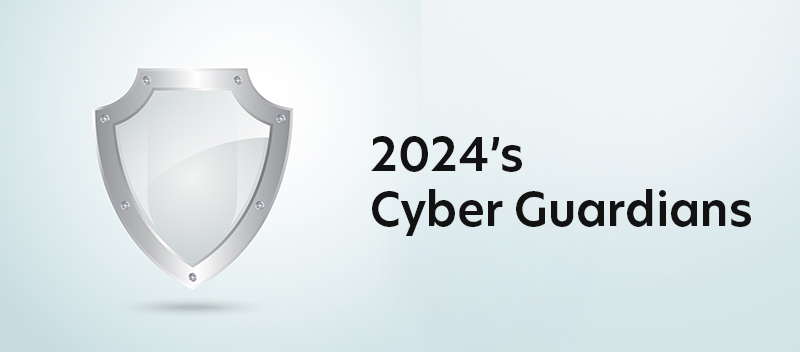
Security solutions that are proactive and adaptable are more important than ever as cyber criminals grow more skilled. On the frontline of defending our digital world are some of the leading companies and their innovative methods and state-of-the-art technology which they apply to address the greatest cyber threats faced today. 2024’s Cyber Guardians: The Forefront Companies In an era where cyber threats are continuously evolving, a select group of companies is leading the charge in developing and deploying advanced cybersecurity solutions: — UpGuard UpGuard specializes in managing third-party risks and attack surfaces, helping organizations prevent data breaches and monitor vendor security. — Drata Drata offers a platform that automates security and compliance, keeping companies audit-ready by monitoring their security controls. — Scrut Automation Scrut Automation streamlines regulatory compliance by tracking security controls and monitoring business applications for risks. — OneTrust Vendorpedia OneTrust Vendorpedia helps manage cyber risks from third-party vendors using security questionnaires and remediation workflows. — Secureframe Secureframe simplifies compliance processes through automation, making it easier for businesses to meet regulatory standards. Introducing TrustNet: Your Trusted Cybersecurity Partner Leveraging advanced cybersecurity solutions can significantly enhance an organization’s security posture and operational resilience. However, choosing the right partner to implement and manage these solutions in is crucial. Introducing TrustNet, a company committed to offering an extensive range of cutting-edge security solutions tailored to each individual organization’s needs. Below, we break down our key offerings to illustrate how we provide end-to-end security: Proprietary Automation Platform Our automation platform, which we supply free of charge along with our services, is the foundation of what we have to offer. With this platform, your company can benefit from cutting-edge technology that is effortlessly integrated into your cybersecurity framework while also increasing efficiency and security without incurring additional expenditures. 24/7 Advisory Services Our expertise shines through our advisory services, available 24/7 to offer support and conduct readiness assessments. This continuous guidance ensures your organization is always prepared for evolving threats, providing peace of mind that you have expert help whenever you need it. In-House Audit Capabilities Our in-house audit capabilities set us apart from newer companies and their third-party auditors who may lack the necessary experience and expertise to handle the complex needs of larger enterprises. We bring a wealth of knowledge and a proven track record to every audit, ensuring thorough and reliable results. Triple A Approach to Certifications When it comes to certification processes like SOC1/SOC2, PCI, NIST, and more, TrustNet excels with our Triple A approach—Audit, Advisory, and Automation.This methodology guarantees a seamless experience, ensuring all aspects of certification are meticulously covered. Learn more about our client success stories, Here Evaluating the Impact of Cyber Guardian Solutions Improved Threat Detection and Incident Response Capabilities AI and ML are used by sophisticated threat detection and response systems to detect possible threats faster and respond more efficiently. This minimizes downtime and lessens the effect of events. Strengthened Data Security and Compliance Posture Cloud-native platforms and robust identity management systems enhance data protection while maintaining compliance with regulations. By doing this, businesses may avoid expensive fines and guarantee that sensitive information is protected and industry requirements are met. Enhanced User and Asset Protection Across the Organization Identity and access management solutions ensure secure user authentication and access control. Safeguarding user identities and corporate assets, these safeguards prevent unwanted access and possible breaches. Increased Supply Chain Resilience and Operational Continuity Focusing on unmanaged and IoT devices, cybersecurity solutions improve supply chain security. By doing this, operational technology and supply chain ecosystems are protected from cyber threats and may continue to function normally even in the face of an attack. Robust Defense for Critical Infrastructure and Industrial Systems Robust security against complex cyber attacks is offered by solutions created especially for operational technology (OT) and industrial control systems (ICS) settings. This guarantees the security and stability of vital systems. Partnering with Cyber Guardians: The TrustNet Advantage With over a decade of experience in the industry, TrustNet has a proven track record of delivering strategic cybersecurity and compliance services. End-to-end assistance and the smooth integration of cybersecurity solutions are areas in which TrustNet excels. From the first phases of planning and evaluation to implementation and ongoing management, we promise a smooth and efficient process. As a partner committed to ongoing innovation, TrustNet constantly improves its strategies and technical countermeasures against novel and developing cyberthreats. Future-focused organizations like TrustNet will play an ever-more-important role as Cyber Guardians. The constantly changing digital environment will present both fresh possibilities and difficulties. TrustNet will continue to provide solutions that ensure our clients are secure and prepared for any future challenges. Ready to take your cybersecurity to the next level? TrustNet is here to guide you every step of the way. Talk to an expert today.
The Dual Power of GhostWatch: Security and Compliance Unveiled
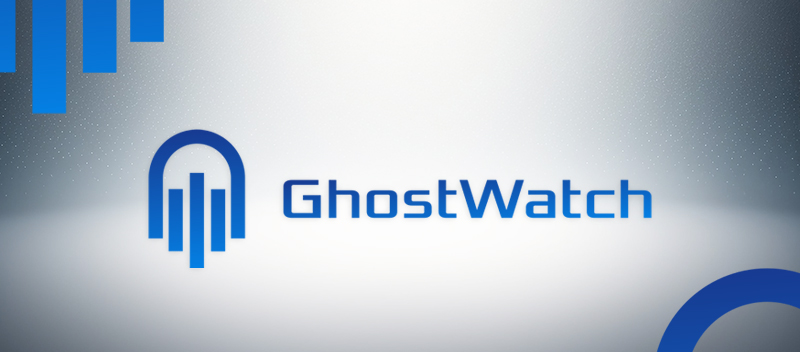
Lately, there’s been a noticeable uptick in cyber threats, and the cunning of hackers and cybercriminals is growing by the day. It’s got businesses all over the world sitting up and taking notice of just how crucial it is to keep their systems and data locked down tight. But it’s not just about warding off these digital threats — it’s equally about making sure they’re playing by the rules and ticking all the boxes for regulatory compliance. Meet GhostWatch from TrustNet. With a global reputation as a leading force in security and compliance management, GhostWatch brings something new to the table with its approach to Managed Security and Compliance services. It goes beyond being just another tool—it’s an all-encompassing safeguard designed to protect businesses from the constant dangers of hackers, cybercriminals, and other threats that lurk in the digital world. In a world where digital risks are ever-evolving, GhostWatch stands as a beacon of security, exemplifying the future of protection in the digital age. Understanding the Dual Power of GhostWatch Your digital assets’ integrity, safety, and legal standing depend heavily on security and compliance. These essential components are combined by GhostWatch into a single, all-inclusive solution that offers businesses unmatched security. Using advanced technologies and resources, GhostWatch Managed Security protects your systems against hackers, cybercriminals, and other threats. GhostWatch provides quick reaction and real-time threat detection with the help of a committed team of cybersecurity experts, making sure your company stays safe in the face of ever-changing digital threats. Compliance is just as important as security. GhostWatch gets how tricky following all those rules can be for businesses. That’s why we take care of the whole compliance process from start to finish, while making sure you are informed and aware of each step. GhostWatch has conducted hundreds of compliance checks and has helped tons of clients achieve compliance. GhostWatch’s twofold asset is its ability to offer complete security and simplified compliance, all rolled into one easy-to-use service. Businesses can feel secure knowing that their digital assets are compliant and safe with this innovative approach. For more about GhostWatch, Click Here Security Empowerment with GhostWatch Being ahead of the curve is not only advantageous but also essential in the field of cybersecurity. This idea is embodied by GhostWatch, which provides businesses with penetration testing and vulnerability assessments, two extremely effective tools. Below is an explanation of each: — GhostWatch Penetration Testing Real-World Simulations: GhostWatch models the most recent hacker strategies by simulating cyberattacks. This practical method shows how a possible hacker may get access to your systems. Expert Insight: Each test is carried out by seasoned cybersecurity professionals who combine expertise with cutting-edge tools to uncover hidden vulnerabilities. Actionable Reports: Post-test, GhostWatch provides detailed reports, outlining discovered weaknesses and recommending specific steps to strengthen your defenses. — Vulnerability Assessment Features Complete Scanning: GhostWatch does a complete search of your digital infrastructure to find vulnerabilities ranging from incorrectly setup networks to outdated applications. Prioritized Risks: Vulnerabilities are not created equal. By helping you rank them according to possible effects, GhostWatch enables you to start by taking care of the most important issues. Updates: Cyberthreats change quickly. GhostWatch conducts periodic inspections to make sure your security measures are current and protecting you from the latest threats. How GhostWatch Proactively Protects Organizations GhostWatch helps avoid issues by combining vulnerability assessments and penetration testing, so it does more than just identify them. Here’s how to do it: Early Vulnerability Detection: This provides you the advantage of patching vulnerabilities before attackers may make use of them. Personalized Security Roadmap: GhostWatch’s research informs a customized security plan that is specifically created to strengthen your company’s defenses. Education and Empowerment: GhostWatch does more than just flag errors; it also instructs your staff on cybersecurity best practices, converting possible weaknesses into advantages. Peace of Mind: You can concentrate on business expansion without having to worry about lingering concerns about digital dangers when you know that your company’s security posture is constantly assessed and strengthened. Talk to our experts today! Compliance Mastery with GhostWatch Here’s how GhostWatch helps to make compliance not just possible but also easy to handle: Tailored Compliance Frameworks: GhostWatch is aware that each and every company is different, for this reason, we provide customized compliance plans that are meticulously developed to comply with certain industry standards, such as PCI DSS, HIPAA, and GDPR. Keep Ahead of the Curve: GhostWatch monitors the latest developments in legislation, which are always changing. Our proactive approach to compliance ensures that you stay up to date with the most recent changes in regulations, which is to your advantage. Enhanced with Automated Compliance Reporting and Remediation GhostWatch uses automation to make sure you succeed in compliance rather than just assist you fulfill it: Automated Compliance Reports: Receive real-time, automated compliance reports to stay informed. These are in-depth insights on your compliance posture, indicating precisely where you are at any given time, not simply updates. Proactive Capabilities: GhostWatch offers quick, astute remedial plans as soon as it finds a compliance issue. These are solutions intended to quickly and efficiently handle particular problems rather than general ones. A Path Towards Continuous Compliance: Adhering to GhostWatch involves ongoing improvement rather than a single checkbox, we guarantee that your procedures and systems are ready to accommodate new rules in the future, in addition to meeting current requirements. Integrating Security and Compliance for Holistic Risk Management It is more essential than ever to incorporate security and compliance into a comprehensive risk management plan. The two work in concert to provide a comprehensive strategy for preserving the integrity and reputation of a company. The Connection Between Compliance and Security Risk Reduction: Organizations may drastically reduce their risk of data breaches, fines from the law, and interruptions to business operations by matching security measures with compliance standards. Efficiency Gains: By streamlining procedures, eliminating duplication, and making sure that efforts in one area support those in another, integrated techniques ensure efficiency. Brand Protection: A cohesive strategy builds consumer
Keeping Up with Evolving Threats: A Guide for Modern Retailers

Amidst the digital transformation in the market today, mid to large-sized retail chains face increasing cyber threats targeting both their physical stores and online platforms. This comprehensive guide provides these larger retail organizations with the crucial knowledge and strategies to bolster their defenses, ensuring they survive and flourish in today’s fast-evolving retail environment. Understanding the Evolving Threat Landscape From point-of-sale system breaches and ransomware attacks to e-commerce site vulnerabilities, retailers face a diverse range of threats with potentially devastating consequences: Financial Losses: Data breaches lead to regulatory fines, compensation costs, and lost sales due to damaged reputation. Reputational Damage: The erosion of customer trust and loyalty can be difficult to rebuild. Operational Disruption: Cyberattacks can cripple operations, causing downtime and lost productivity. For more on our cybersecurity and compliance services for retail, Click Here A Holistic Approach to Security Combating these threats requires a comprehensive strategy encompassing: Employee Training and Awareness: Empowering staff to recognize and respond to potential threats. Robust Cybersecurity Measures: Implementing firewalls, anti-malware software, encryption, and other security protocols. Continuous Monitoring and Incident Response: Proactive threat detection and swift action to mitigate breaches. Securing the Physical Retail Environment Innovative technologies play a crucial role in enhancing physical store security: Biometric Access Controls: Utilizing unique biological characteristics for secure access to restricted areas. Advanced Surveillance Systems: Employing AI-powered systems for real-time threat detection and intelligent video analytics. Integrated Security Platforms: Centralized access control, surveillance, and alarm system management for streamlined security operations. Protecting the Retail Digital Ecosystem Safeguarding the digital landscape involves: Robust Network Security and Endpoint Protection: Implementing firewalls, intrusion detection/prevention systems, and endpoint security solutions. Secure Payment Processing and Data Encryption: Adhering to PCI DSS standards, utilizing P2PE and tokenization, and encrypting data at rest and in transit. Cloud-Based Security Solutions: Leveraging scalable and flexible cloud security for distributed retail environments. TrustNet: Your Partner in Retail Security TrustNet specializes in delivering advanced cybersecurity solutions designed to meet the intricate requirements of mid to large-sized retail chains. Our offerings include: Managed Security Package: This all-encompassing package features penetration testing, risk assessments, security awareness training, incident response, continuous security monitoring, and cutting-edge threat management, ensuring your retail chain is fortified against current and emerging threats. Network Security, Cloud Security, and Compliance Solutions: With a dedicated focus on Network Security, Cloud Security, and Compliance, we provide robust defenses and guarantee compliance with critical industry standards essential for larger retail operations. Integrated Physical and Digital Security: By integrating physical and digital security measures, TrustNet establishes a unified defense strategy, offering comprehensive protection tailored to the expansive and complex nature of mid-to-large retail environments. Talk to our experts today! Optimizing Security for Continuous Improvement Retailers must adopt a proactive and adaptable approach to security: Regular Risk Assessments: Aligning security measures with evolving business priorities and vulnerabilities. ROI-Focused Investments: Prioritizing security technologies and practices that deliver the greatest value. Data-Driven Decision Making: Utilizing analytics to inform strategic security decisions. Real-Time Threat Intelligence: Staying ahead of emerging threats with the latest information. Ongoing Training and Awareness Programs: Maintaining a security-conscious culture within the organization. Building a Resilient Future For mid to large-sized retail chains, the future of securing their vast operations lies in a sophisticated integration of physical and digital defense mechanisms. By leveraging the power of Artificial Intelligence (AI), machine learning, and the Internet of Things (IoT), these retail giants can develop a security ecosystem that is not only reactive but also anticipatory. This advanced strategy enables real-time threat detection, predictive analytics for preempting potential security breaches, and automated incident response protocols. Incorporating these cutting-edge technologies ensures that larger retail establishments are equipped with a comprehensive, scalable, and intelligent security framework designed to protect against the complex spectrum of threats the retail sector faces today. Partner with TrustNet to transform your retail security challenges into opportunities. Contact our experts today.
Retail’s Digital Shield: Proven Strategies for Superior Cyber Security

Digital transformation is revolutionizing the retail industry. However, the specter of cyber threats looms larger than ever. With the retail sector increasingly becoming a prime target for sophisticated cyberattacks, understanding the threat landscape is not just advisable; it’s imperative for survival and success. This article examines modern cyber threats, from emerging attack vectors that prey on digital assets to the profound impacts of data breaches on businesses and consumer trust. More importantly, it underscores the critical need for retailers to adopt a proactive and multilayered approach to cybersecurity. Keep reading to learn more. Understanding the Retail Cyber Threat Landscape Cybercriminals continuously adapt, finding new ways to exploit vulnerabilities within digital platforms. This section explores some of the retailers’ most pressing threats today: — Sophisticated Phishing Schemes: These schemes have become more sophisticated, using social engineering tactics to mimic legitimate communications from vendors or internal teams. — Malware and Ransomware Attacks: These attacks can paralyze online sales, inventory management, and customer service, leading to substantial financial losses and damage to brand reputation. — POS System Vulnerabilities: Hackers exploit weaknesses in these systems to steal credit card information, personal data, and even manipulate transaction details. — E-commerce Platform Breaches: Online retail platforms must guard against various cyberattacks, including SQL injections, cross-site scripting (XSS), and Distributed Denial of Service (DDoS) attacks. — Supply Chain Cyber Risks: Compromises in the security of one supplier can lead to cascading effects across the retail network, affecting product availability and exposing customer information. — Insider Threats: Sometimes, the threat comes from within. Employees or contractors with access to the retailer’s network might intentionally or accidentally expose the system to cyber threats. Establishing a Solid Foundation for Retail Cyber Security In the face of evolving cyber threats, retailers must prioritize a comprehensive security strategy that encompasses several key areas: Robust Network Security and Access Controls Implementing strict network security measures and access controls forms the bedrock of retail cyber security. This includes deploying firewalls, intrusion detection systems (IDS), and secure virtual private networks (VPNs) to monitor and control incoming and outgoing network traffic based on an applied rule set. Access controls ensure that only authorized individuals can access certain data or systems, minimizing the risk of internal breaches. Advanced Endpoint Protection and Threat Detection Endpoints, such as mobile devices and laptops, are often the target of cyberattacks. Advanced endpoint protection solutions go beyond traditional antivirus software, using machine learning and behavior analysis to detect and respond to threats in real-time. Integrating a Security Information and Event Management (SIEM) system can further enhance threat detection by aggregating and analyzing data from various sources within the IT infrastructure. Secure Payment Processing and Data Encryption Implementing secure payment processing systems that comply with the Payment Card Industry Data Security Standard (PCI DSS) helps prevent financial fraud. Additionally, encrypting sensitive data at rest and in transit ensures that even if data is intercepted, it remains unreadable and useless to attackers. Utilizing tokenization can also add an extra layer of security by replacing sensitive data elements with non-sensitive substitutes. Creating a secure retail environment in the digital age requires ongoing vigilance, investment in cutting-edge technology, and a proactive approach to cyber security. For more on our cybersecurity and compliance services for retail, Click Here Leveraging TrustNet’s Comprehensive Cyber Security Solutions TrustNet’s expertise in the retail industry is built on a profound comprehension of its unique challenges. This understanding enables us to provide solutions specifically designed to meet the needs of retailers. TrustNet’s Managed Security Package delivers an all-encompassing security solution, providing strong defenses against cyber threats and ensuring adherence to regulatory requirements. Essential components include: Penetration Testing: Proactively identify vulnerabilities in your digital and physical security measures to prevent potential breaches. Cybersecurity Risk Assessment: Evaluating your current security posture and identifying areas for improvement to mitigate risks effectively. Security Awareness Training: Equipping your staff with the knowledge to recognize and respond to cyber threats enhances your first line of defense. Incident Response: Ensuring you’re prepared to act swiftly and efficiently in the event of a security breach to minimize impact. Security Monitoring: Continuous surveillance to detect and address threats promptly. Advanced Threat Management: Tackling sophisticated cyber threats with cutting-edge strategies. Network Security: Comprehensive network protections, including firewalls and intrusion prevention. Cloud and Multi-Cloud Security: Specialized security measures for cloud-based retail operations, ensuring data integrity and protection across all platforms. Compliance: Customized solutions to meet retail-specific regulatory requirements, including PCI DSS, ISO 27001, CCPA, SOC, and more. TrustNet specializes in developing cohesive defense strategies that bridge the gap between physical and cyber security, offering complete safeguarding against various threats. This integrated method fortifies your assets while simplifying security management throughout your organization. Talk to our experts today! Optimizing Retail Cyber Security through Data-Driven Insights Enhancing retail cyber security isn’t just about deploying tools and technologies; it’s also about harnessing the power of data to make informed decisions. Here’s how: — Leveraging Security Analytics and Threat Intelligence Security analytics allows retailers to analyze vast amounts of data to identify patterns and predict potential threats. Incorporating threat intelligence into this mix provides real-time information about emerging threats and vulnerabilities, enabling businesses to stay one step ahead of cybercriminals. — Automating Security Processes and Incident Response By automating routine tasks and responses to common threats, retailers can reduce the time and resources required for incident management. This enhances efficiency and ensures that when a cyber incident occurs, the response is swift and effective, minimizing potential damage. — Fostering a Culture of Security Awareness and Resilience Cultivating a culture of security awareness through regular training and education programs equips staff with the knowledge to recognize and prevent security threats. Building resilience involves preparing for the eventuality of a cyber attack and having robust recovery plans, ensuring that the business can quickly bounce back. By focusing on data-driven insights, automation, and a strong security culture, retailers can create a resilient environment capable of adapting to the evolving cyber landscape. Achieving Compliance and Regulatory Alignment Achieving compliance and
Healthcare’s Cyber Guard: Innovative Solutions to Protect Patient Data & HIPAA
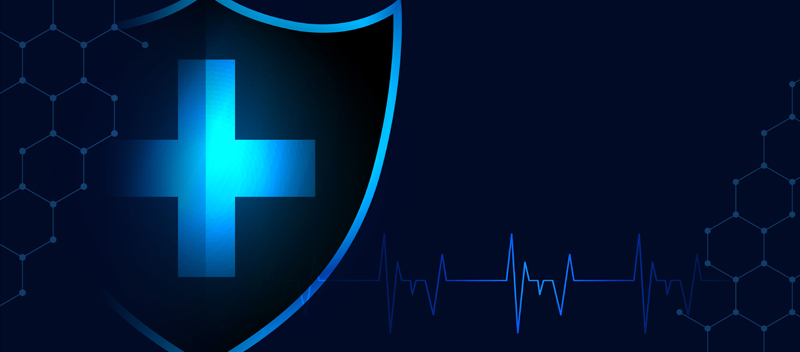
The modernization of technology and medicine in healthcare has unlocked remarkable capabilities, from telehealth consultations to AI-driven diagnostics. However, this digital evolution also ushers a heightened vulnerability to cyber threats. The healthcare sector has become a prime target for cybercriminals. The consequences of data breaches extend beyond financial loss, risking patient privacy and the integrity of healthcare services. Thus, the industry faces an urgent call to armor itself against the growing threat landscape. This article explores the innovative solutions emerging as healthcare’s cyber guard, aimed at fortifying patient data and ensuring steadfast compliance with HIPAA. In doing so, it not only safeguards the privacy and security of patient information but also upholds the trust and reliability foundational to patient care. Understanding HIPAA Compliance Grasping the intricacies of HIPAA is essential for complete compliance and nurturing an environment centered around the confidentiality and security of patient information within healthcare entities. — The Privacy Rule: This critical component of HIPAA sets national standards for safeguarding individual medical records and other personal health information (PHI). It encompasses healthcare providers, health plans, and healthcare clearinghouses that deal with health information in an electronic format. This rule demands the secure handling of PHI and specifies the conditions under which PHI may be shared. — The Security Rule: Focused on protecting electronic PHI (e-PHI), the Security Rule specifies guidelines for ensuring the confidentiality, integrity, and availability of e-PHI. It obligates covered entities to enact physical, technical, and administrative protections to guard electronic health information from unauthorized entry, changes, or deletion. — The Breach Notification Rule: Should there be a breach involving PHI that is not secured, this regulation outlines the necessary steps for informing impacted individuals, the Secretary of Health and Human Services, and sometimes, the media. Its purpose is to maintain openness and swift action during breaches to mitigate potential damage to those affected. For healthcare organizations, compliance goes beyond simply following these rules; it involves fully incorporating them into daily operations. Learn more about our HIPAA compliance services Here Assessing Cybersecurity Vulnerabilities Here’s a closer look at how organizations can effectively assess their cybersecurity vulnerabilities: Conducting a Comprehensive Risk Assessment A comprehensive risk assessment involves a detailed evaluation of your IT systems, identifying where your organization is most vulnerable to cyber threats. This step is crucial for understanding your organization’s specific risks and prioritizing them based on their potential impact. Key components of a successful risk assessment include: Identification of Assets: Determining what data, systems, or resources are crucial to your organization’s operations. Threat Modeling: Analyzing potential threat actors and their methods to target your organization’s assets. Vulnerability Analysis: Utilizing tools and techniques to discover vulnerabilities within your systems and software. Identifying Gaps and Weaknesses in Existing Security Measures After understanding the risks, the next step is identifying gaps in your security measures. This involves examining your security protocols and determining where they fall short in protecting against identified vulnerabilities. Effective strategies for this phase include: Security Audits and Reviews: Regularly auditing your security measures against industry standards and best practices to identify shortcomings. Penetration Testing: Simulating cyber-attacks on your systems to test the effectiveness of your security measures and identify exploitable vulnerabilities. Regular Software Updates: Ensuring all software and systems are up-to-date with the latest security patches to mitigate known vulnerabilities. Incorporating a systematic approach to vulnerability assessment helps organizations stay ahead of potential threats by proactively identifying and mitigating risks. Talk to our experts today! Assessing Cybersecurity Vulnerabilities Here, we outline the key cybersecurity strategies for HIPAA compliance across three primary areas: Administrative, Physical, and Technical Safeguards. Administrative Safeguards These safeguards are crucial for HIPAA compliance, emphasizing the governance of workforce behavior and the protection strategies for electronic Protected Health Information (ePHI). Development of Policies and Procedures: Craft and maintain explicit policies and procedures that align with your entity’s operations and adhere to HIPAA standards. Evaluation and Mitigation of Risks: Regularly execute comprehensive risk evaluations to pinpoint potential threats to ePHI’s confidentiality, integrity, and accessibility. Apply appropriate safeguards to lessen these risks. Education and Consciousness of the Workforce: Conduct continuous education and awareness sessions for employees to reinforce their understanding of their part in achieving HIPAA compliance. Physical Safeguards These measures protect electronic systems, equipment, and data from physical threats and unauthorized access. Regulation of Facility Entry: Formulate guidelines to restrict physical entry to facilities while enabling legitimate access as needed. Security of Workstations: Secure workstations that access ePHI in protected locations and draft usage policies. Management of Devices and Media: Set forth procedures for the handling, removal, and disposal of hardware and storage media holding ePHI. Technical Safeguards These protocols concentrate on the technologies used to defend ePHI and manage who has access to it. Access Management: Enact technical policies and methods to guarantee that only authorized personnel can interact with ePHI. Monitoring Systems: Utilize technical solutions and procedures to log and review actions on systems dealing or interacting with ePHI. Protection of Data Transmission: Ascertain that any ePHI sent across open networks is secured against unauthorized interception. Following this structured approach can enhance the safeguarding of patient details and help healthcare organizations efficiently manage HIPAA compliance complexities. Ensuring Continuous HIPAA Compliance Healthcare organizations must continuously monitor and audit their security controls while staying abreast of changes in HIPAA regulations and industry best practices. Here’s how organizations can maintain a steadfast commitment to HIPAA compliance: Ongoing Monitoring and Auditing of Security Controls Regular monitoring and auditing are essential for identifying potential vulnerabilities and ensuring the effectiveness of existing security measures. This proactive approach allows for the timely detection and remediation of any issues that could compromise patient data or compliance status. Implement Continuous Monitoring Systems: Utilize advanced software solutions that continuously scan for anomalies, threats, and changes in the security environment, ensuring round-the-clock vigilance. Schedule Regular Audits: Conduct comprehensive audits of all HIPAA-related policies, procedures, and security measures regularly to ensure they meet current standards and requirements. Review Access Logs: Regularly review the system and data access logs
Cyber Security Threat Vectors: A Comprehensive Guide on Attack Pathways and Prevention Measures
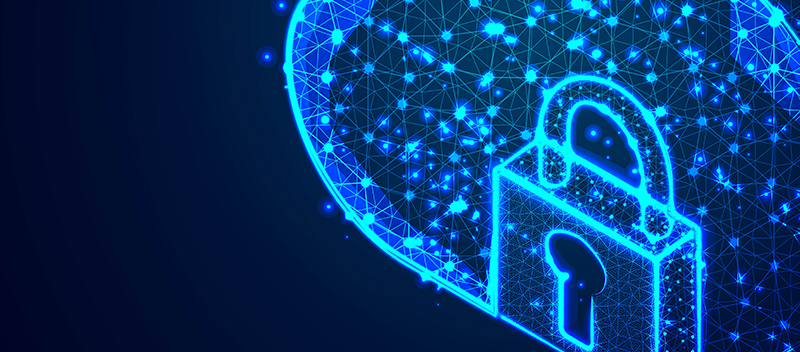
Cyber security threat vectors are the pathways or methods through which malicious actors gain unauthorized access to systems, networks, and data. They pose significant risks to individuals, businesses, and governments alike. This comprehensive guide aims to unravel the complex web of cyber security threat vectors, from phishing scams and malware infections to sophisticated ransomware attacks. Keep reading to learn more. Common Cyber Security Threat Vectors Understanding the common types of cyber security threat vectors is essential in developing effective defense mechanisms. Here, we explore some of the most prevalent forms of cyber threats actively targeting users and organizations around the globe. Phishing Attacks and Social Engineering Tactics Phishing attacks represent one of the most widespread and insidious cyber threats. These attacks typically involve using deceptive emails, messages, or websites that mimic legitimate entities, tricking individuals into disclosing sensitive information such as passwords, credit card numbers, or personal identification details. Social engineering tactics further amplify the effectiveness of phishing by exploiting human psychology, persuading victims to voluntarily compromise their security without realizing the potential consequences. Malware Distribution and Ransomware Threats Malware, short for malicious software, has a broad range of software designed to harm or exploit any programmable device, service, or network. Cybercriminals distribute malware through various channels, including email attachments, compromised websites, and infected software downloads. Among the most destructive forms of malware are ransomware threats, which encrypt the victim’s data, rendering it inaccessible until a ransom is paid. Ransomware attacks can be devastating, leading to significant financial losses and operational disruptions. DDoS Attacks and Network Vulnerabilities Distributed Denial of Service (DDoS) attacks aim to overwhelm a target’s online services, rendering them unavailable to legitimate users. These attacks exploit the collective power of compromised computers and devices, known as botnets, to flood servers with excessive traffic. Beyond DDoS, cybercriminals continuously seek out and exploit network vulnerabilities, such as outdated software, unsecured endpoints, and weak encryption, to gain unauthorized access or disrupt network operations. By recognizing the tactics employed by cybercriminals, individuals and organizations can better prepare and defend against these ever-evolving cyber risks. Learn more about our cybersecurity and compliance services Here Understanding Attack Pathways Attack pathways are the routes or methods cybercriminals exploit to accomplish their malicious objectives. Here, we dissect some key attack pathways. Exploitation of Software Vulnerabilities and Zero-Day Attacks Software vulnerabilities are flaws or weaknesses in computer programs that attackers can exploit to gain unauthorized access or cause harm. These vulnerabilities can stem from programming errors, insufficient security features, or unpatched software. Zero-day attacks refer to the exploitation of vulnerabilities unknown to the software vendor or not yet addressed by a patch. These attacks are hazardous because they occur before the vulnerability is widely recognized and remedied, allowing cybercriminals to inflict damage. Insider Threats and Data Breaches Not all attacks originate from external actors; insider threats pose a significant risk to organizations. These threats come from individuals within the organization, such as employees, contractors, or business partners, who have authorized access to sensitive information and systems. Insiders can cause data breaches through malice or negligence, leaking confidential data to unauthorized parties. The impact of such breaches can be catastrophic, leading to financial losses, reputational damage, and legal consequences. Supply Chain Attacks and Third-Party Risks Organizations often rely on a network of suppliers, vendors, and third-party service providers. Supply chain attacks exploit these relationships, targeting less secure elements in the network to compromise the primary organization. Attackers may infiltrate a third-party vendor with weaker security measures as a steppingstone to accessing the final target. These attacks highlight the need for comprehensive security assessments and control across the supply chain. Understanding these attack pathways emphasizes the necessity for a multi-layered security strategy that addresses technological vulnerabilities, human factors, and organizational processes. Talk to our experts today! Prevention Measures and Best Practices In the battle against cyber threats, prevention is undoubtedly better than cure. Here, we outline key prevention measures and best practices organizations can implement to fortify their digital defenses. Implementing Robust Access Controls and Authentication Mechanisms: Establish strong access control policies to ensure that only authorized users can access sensitive information and systems. This includes implementing least privilege principles, where users are granted the minimum level of access necessary for their roles. Use multi-factor authentication (MFA) wherever possible. MFA adds a layer of security by requiring users to provide two or more verification factors to access a resource. Regular Security Training for Employees to Recognize and Report Threats: Conduct regular security awareness training sessions to educate employees about the latest cyber threats and tactics attackers use, such as phishing, social engineering, and malware. Encourage a security culture within the organization where employees feel responsible and empowered to report suspicious activities or potential threats. Utilizing Encryption, Firewalls, and Intrusion Detection Systems: Implement encryption protocols to protect data in transit and at rest. Encryption ensures that even if data is intercepted or accessed without authorization, it remains unintelligible and useless to the attacker. Deploy firewalls to monitor and control incoming and outgoing network traffic based on predetermined security rules. Use intrusion detection systems (IDS) and intrusion prevention systems (IPS) to continuously monitor network and system activities for malicious or policy violations. It’s important to remember that cybersecurity is an ongoing process that requires constant vigilance, regular updates, and adaptation to new threats and technologies. Incident Response and Recovery Strategies Effective incident response and recovery strategies can help organizations navigate the aftermath of an attack with resilience and agility. Here, we outline the essential components of these strategies. Developing a Comprehensive Incident Response Plan: Create a detailed incident response plan outlining procedures for responding to various cyber incidents. This plan should identify critical roles and responsibilities, communication protocols, and steps for preventing threats. Regularly test and update the incident response plan through exercises such as tabletop simulations. This ensures that all stakeholders are familiar with their roles and the plan remains effective against evolving threats. Backup and Recovery Procedures to Mitigate the Impact of Cyber Attacks: Implement
iTrust: A Tool for Today’s Cybersecurity Challenges
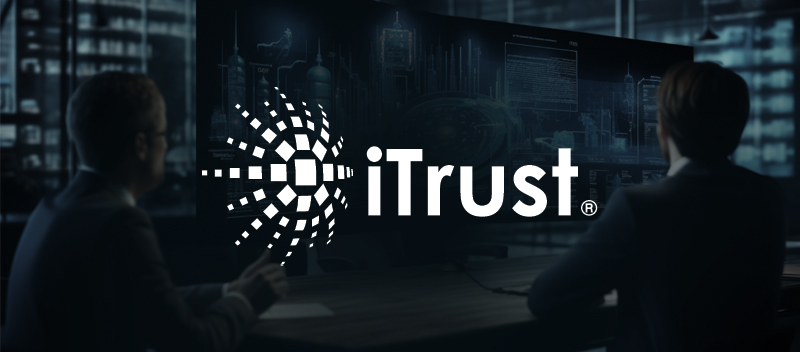
Organizations worldwide are grappling with safeguarding their digital assets against escalating threats. These threats encompass traditional cyber-attacks and include more insidious risks that lurk within the vast amounts of data organizations generate and store. The complexity and volume of these challenges demand a shift from conventional cybersecurity measures to more dynamic, intelligent solutions. Enter iTrust, a pioneering cybersecurity tool designed to meet the multifaceted demands of today’s cyber threat environment. At its core, iTrust revolutionizes the approach to cyber risk assessment and management by leveraging the power of advanced data analysis techniques. The platform stands out by employing sophisticated algorithms that harness machine learning to parse data interactively, identifying overt risks and uncovering hidden vulnerabilities that might elude traditional detection methods. This capability represents a significant leap forward, offering organizations a much-needed lens to view their cyber risk landscape. Through its adept analysis of diverse data sources, iTrust provides unprecedented insight into potential cyber threats. This analytical prowess enables a more nuanced understanding of an organization’s risk profile, facilitating a proactive stance toward cybersecurity management. By predicting and preempting potential security breaches before they occur, iTrust empowers organizations to defend against and outpace tomorrow’s cyber threats. iTrust emerges as a tailored solution, offering a sophisticated blend of automation, advanced data analysis, and machine learning capabilities. This whitepaper delves into the operational framework of iTrust, exploring how it equips organizations to understand, anticipate, and mitigate cyber risks in today’s ever-changing digital landscape. Understanding iTrust’s Adaptability In an era marked by rapidly evolving cyber threats, the adaptability of cybersecurity tools is paramount. This section delves into the adaptability of iTrust, highlighting the importance of adaptive solutions in today’s digital age. 1. Overview of iTrust’s Features Designed to Address Dynamic Cybersecurity Challenges iTrust harnesses state-of-the-art machine learning technologies to navigate the complexities of modern cyber risk management effectively. One of the platform’s standout features is its capacity to analyze extensive datasets, allowing it to pinpoint hidden vulnerabilities that might evade traditional risk assessment methods. This capability is crucial for identifying and addressing the subtle indicators of potential breaches that could otherwise go unnoticed until it’s too late. Additionally, iTrust delivers highly precise and comprehensive cyber risk ratings, utilizing sophisticated data analysis and algorithm-based learning. These assessments offer more than a mere snapshot of an organization’s security posture; they provide a predictive insight into future vulnerabilities. This forward-looking perspective is invaluable in today’s digital landscape, where anticipating and mitigating emerging threats can significantly enhance an organization’s cybersecurity readiness. By forecasting potential vulnerabilities, iTrust enables smarter allocation of resources, focusing efforts on mitigating the most significant predicted risks. This strategic foresight strengthens defense mechanisms and ensures that organizations are better prepared to confront the challenges of tomorrow. 2. The Importance of Adaptive Solutions in Today’s Threat Landscape The digital threat landscape is characterized by its fluidity, with new threats emerging at an unprecedented pace. In this environment, more than static cybersecurity solutions are required. Adaptive solutions like iTrust, designed to learn from and evolve with the threat landscape, are essential for maintaining robust security postures. Adaptive solutions offer several key advantages. First, they enable continuous learning, ensuring that cybersecurity measures remain effective against the latest threats. Second, they provide the agility to respond swiftly to emerging risks, minimizing potential damage. Lastly, adaptive solutions facilitate a deeper understanding of the threat landscape, allowing organizations to anticipate rather than merely react to security challenges. iTrust’s adaptability positions it as a critical asset for organizations aiming to secure their digital futures. As cyber threats grow more complex and potentially harmful, the importance of adopting adaptive solutions like iTrust cannot be overstated. Learn more about iTrust Here Key Features of iTrust iTrust is designed to meet the multifaceted challenges of today’s cybersecurity landscape. This section outlines the key features of iTrust, emphasizing its advanced threat detection and response capabilities, real-time monitoring coupled with predictive analytics, and customizable security protocols. 1. Advanced Threat Detection and Response Capabilities iTrust conducts thorough risk assessments that allow organizations to understand their current security posture and foresee potential cyber risks. This process involves analyzing patterns within vast datasets to identify trends indicative of possible vulnerabilities, ensuring that threats are detected early and addressed promptly. iTrust also enhances its threat detection capabilities by integrating threat intelligence from a global network of threat researchers and security professionals. This integration facilitates a deeper understanding of emerging threats, enabling iTrust to identify and respond to new risks more effectively. The combination of predictive analytics and threat intelligence integration allows organizations to swiftly neutralize potential security breaches before they can cause significant damage. 2. Real-Time Monitoring and Predictive Analytics for Proactive Security Measures Real-time monitoring is another cornerstone of the iTrust platform. This feature ensures continuous surveillance of an organization’s digital environment, alerting them to emerging threats as they occur. With predictive analytics, real-time monitoring enables iTrust to offer proactive security measures, equipping organizations with the foresight to anticipate and mitigate future vulnerabilities. The predictive analytics component of iTrust analyzes historical and current data to forecast potential security incidents, allowing organizations to adopt a proactive stance toward their cybersecurity strategy. This forward-looking approach is essential in today’s rapidly evolving threat landscape. 3. Customizable Security Protocols to Meet Diverse Cybersecurity Needs Recognizing that each organization has unique cybersecurity needs, iTrust offers customizable security protocols. This flexibility allows businesses to tailor their risk mitigation strategies, ensuring that resources are allocated efficiently and that cybersecurity measures align with their specific operational requirements. Customizable security protocols mean that organizations are not confined to a one-size-fits-all approach; instead, they can prioritize and address their most pressing risks in a manner that best suits their environment. This adaptability enhances the effectiveness of cybersecurity efforts and ensures that organizations can maintain a robust defense against various threats. 4. Other Features Furthermore, iTrust incorporates more critical features to enhance its cyber risk monitoring capabilities: Insider Risk Assessment: iTrust assesses cybersecurity risks within an organization, including those posed by insider threats. Compliance Status: The platform tracks
Cyber Security Posture in 2024: All You Need to Know

Cyber security posture refers to an organization’s overall defensive stance against cyber threats, encompassing its policies, practices, and technologies designed to protect digital assets and sensitive information from unauthorized access, theft, or damage. As we venture further into 2024, understanding and fortifying one’s cyber security posture has become more crucial than ever. Emerging technologies and digital innovations continue to reshape how we live, work, and interact. However, these advancements also introduce new vulnerabilities and avenues for cybercriminals to exploit. In the following sections, we will explore the most pressing cyber threats in 2024, the key components of an effective cyber security posture, and provide actionable insights to enhance your organization’s resilience against cyberattacks. Key Trends Shaping Cyber Security in 2024 Here are the key trends shaping cyber security in 2024 that you should know about: Rise of AI and Machine Learning in Cybersecurity Integrating Artificial Intelligence (AI) and machine learning into cyber security practices has been a game-changer. These technologies have significantly enhanced the ability to detect and respond to cyber threats quickly and accurately. AI-driven security systems can analyze vast amounts of data to identify patterns and anomalies indicative of cyberattacks, often spotting threats that would elude human analysts. This proactive stance allows for quicker mitigation and lessens potential damage. Automated Threat Detection: AI algorithms continuously learn from new data, improving their ability to detect emerging threats. Incident Response: Machine learning enables faster and more effective response strategies, minimizing downtime and impact. Impact of Quantum Computing on Encryption and Security Measures Quantum computing represents a double-edged sword for cyber security. On one hand, its immense processing power promises to revolutionize areas such as data analysis and encryption. Conversely, it poses a significant threat to current cryptographic standards, potentially rendering them obsolete. The advent of quantum computing necessitates the development of quantum-resistant encryption methods to safeguard sensitive information against future quantum-enabled cyber threats. Quantum-Resistant Encryption: Researchers are actively developing new encryption methods that can withstand the capabilities of quantum computing. Increased Focus on Zero-Trust Security Frameworks The concept of “never trust, always verify” underpins the zero-trust security model, which has gained significant traction in 2024. In contrast to traditional perimeter-based security models, zero-trust assumes that threats can originate from anywhere — both outside and within the network. This approach requires strict identity verification for every person and device attempting to access resources on a private network, regardless of location. Microsegmentation: Dividing networks into small, secure zones to contain potential breaches. Multi-factor Authentication (MFA): Applying multiple layers of authentication to verify user identities. These trends underscore the dynamic nature of cyber security in 2024. By embracing them, businesses can significantly enhance their cyber defense mechanisms. Learn more about the key trends in cybersecurity Here Emerging Threats and Challenges Organizations must stay vigilant and adapt their security measures to counter these threats and challenges: Ransomware Attacks and Their Evolving Tactics Ransomware attacks have undergone significant evolution, becoming more sophisticated and targeted. These attacks not only encrypt victims’ files, demanding a ransom for their release but also increasingly involve data theft, with attackers threatening to leak sensitive information unless additional demands are met. The dual-threat approach amplifies the potential impact on victims, encompassing financial losses, reputational damage, and legal ramifications. Double Extortion: Attackers not only encrypt data but also threaten its publication. Targeted Attacks: Increasing focus on high-value targets, including critical infrastructure and large corporations. Threats Posed by IoT Devices and the Need for Enhanced Security Measures The proliferation of Internet of Things (IoT) devices has significantly expanded the attack surface for cybercriminals. Many IoT devices are not built with security in mind, making them easy targets for attackers looking to infiltrate networks or launch large-scale Distributed Denial of Service (DDoS) attacks. Ensuring these devices are secure by design and implementing robust security protocols is crucial to mitigate their risks. Device Hardening: Implementing security features in IoT devices during the manufacturing process. Network Segmentation: Isolating IoT devices from critical network segments to contain potential breaches. Regulatory Changes Impacting Cybersecurity Practices Regulatory landscapes worldwide are evolving to address the growing concerns over cyber security and data privacy. New and updated regulations impose stricter requirements on organizations to protect consumer data and report breaches. These changes underscore the need for compliance but also introduce new challenges in implementation and ongoing management. Data Protection Laws: Increasingly stringent requirements for protecting personal and sensitive data. Breach Notification: Mandatory reporting of security breaches within specified timeframes. Organizations must continuously evaluate and update their security practices in response to the dynamic threat landscape and regulatory environment. Talk to our experts today! Strategies for Enhancing Cyber Security Posture In response to the escalating cyber threats and regulatory pressures of 2024, organizations are adopting comprehensive strategies to bolster their cyber security posture: Implementing Multi-factor Authentication and Biometric Security Measures One of the most effective steps an organization can take to protect its digital assets is strengthening access controls. Implementing multi-factor authentication (MFA) and biometric security measures significantly reduces the risk of unauthorized access. Multi-factor Authentication (MFA): Requires users to provide two or more verification factors to gain access to resources, adding an extra layer of security beyond just passwords. Biometric Security: Utilizes unique biological characteristics, such as fingerprints or facial recognition, to verify identity, offering a high degree of accuracy and security. Leveraging Threat Intelligence and Proactive Incident Response Strategies Staying informed about the latest cyber threats and having a proactive incident response plan is crucial for minimizing the impact of a breach. Leveraging threat intelligence allows organizations to anticipate and respond to threats more effectively. Threat Intelligence: Utilizing data gathered from various sources to identify potential threats before they impact the organization. Incident Response Planning: Developing and regularly updating a comprehensive incident response plan to ensure quick and coordinated action in the event of a security breach. Partnering TrustNet for Enhanced Cybersecurity and Compliance Partnering with experts like TrustNet is not just about outsourcing security tasks; it’s about leveraging expert knowledge and cutting-edge technology to create a
Blue Team vs. Red Team Cybersecurity: A Comparative Study of Defensive and Offensive Strategies

Blue Team and Red Team operations represent the dual facets of cybersecurity practices aimed at fortifying an organization’s defenses and testing its resilience. At the heart of cybersecurity operations, the Blue Team represents the defensive force within an organization. Tasked with developing, implementing, and maintaining strong security measures, the Blue Team’s primary objective is to protect information systems from breaches, attacks, and other security threats. Conversely, the Red Team assumes an offensive role, simulating real-world attackers’ tactics, techniques, and procedures (TTPs). By adopting an adversarial approach, the Red Team challenges the effectiveness of the Blue Team’s defenses. By comparing the defensive and offensive strategies of Blue Team and Red Team cybersecurity, this study aims to highlight the importance of a balanced and integrated approach to cybersecurity. Blue Team Defensive Strategies The Blue Team plays a pivotal role in the cybersecurity defense mechanism of an organization, focusing on maintaining a robust security posture and swiftly responding to any incidents that may compromise the integrity of the system. Their responsibilities encompass: Continuous Monitoring: Keeping a vigilant eye on network traffic and system activities to identify any abnormal patterns or signs of malicious activity. Vulnerability Management: Regularly scanning the organization’s systems to identify and patch vulnerabilities before attackers can exploit them. Security Policy Enforcement: Ensuring that security policies are strictly adhered to across the organization, including access controls, data encryption, and user authentication protocols. Incident Response: When a security breach is detected, the Blue Team executes a well-coordinated response plan to contain the threat, eradicate the intrusion, and recover any affected systems. To effectively carry out their duties, Blue Teams leverage a variety of sophisticated tools and techniques, including: Firewalls and Intrusion Detection Systems (IDS): The first line of defense, blocking unauthorized access and alerting the team to potential intrusions. Security Information and Event Management (SIEM) Systems: SIEM systems aggregate and analyze logs from various sources within the organization, providing real-time analysis of security alerts generated by applications and network hardware. Endpoint Detection and Response (EDR) Solutions: EDR tools provide continuous monitoring and response capabilities for threats on endpoints (e.g., laptops and mobile devices), offering insights into threat patterns and behaviors. Threat Intelligence Platforms: These platforms gather data on emerging threats and known bad actors, helping Blue Teams anticipate and prepare for specific attacks. The Blue Teams’ proactive and reactive measures ensure that the organization can withstand attacks and recover swiftly and efficiently, minimizing any potential damage. Learn more about our cybersecurity and compliance services Here Red Team Offensive Strategies Red Teams’ primary goal is to test, challenge, and ultimately improve the defensive mechanisms put in place by the Blue Team. By adopting the mindset and tactics of real-world adversaries, Red Teams provide invaluable insights into potential security weaknesses and the effectiveness of current security measures. The core objectives of Red Team operations include: Realistic Threat Simulation: Mimicking actual attackers’ techniques, tactics, and procedures (TTPs) to assess how well an organization can withstand targeted cyber attacks. Identifying Weaknesses: Through comprehensive testing, Red Teams uncover technical and human vulnerabilities within the organization’s defenses. Enhancing Incident Response: Testing the organization’s incident response capabilities under realistic conditions to ensure that potential breaches can be effectively contained and mitigated. Providing Constructive Feedback: Delivering detailed reports on findings and recommendations for strengthening the organization’s cybersecurity framework. To achieve their objectives, Red Teams utilize a variety of methodologies and tools, including: Penetration Testing: Conducting authorized attempts to breach the various components of the organization’s IT infrastructure to identify exploitable vulnerabilities. Social Engineering: Utilizing deception to manipulate individuals into divulging confidential information or performing actions that may compromise security. Phishing Simulations: Crafting and deploying deceptive emails or messages to assess employees’ susceptibility to phishing attacks. Physical Security Assessments: Testing physical access controls and procedures to identify potential breaches that could lead to unauthorized access to sensitive areas or information. Red Teams provide a proactive approach to security through these methodologies, unearthing vulnerabilities that might not be discovered through traditional security audits or assessments. Talk to our experts today! Comparative Analysis of Blue vs. Red Teams Blue Teams are inherently defensive, focusing on protecting, detecting, and responding to cyber threats against an organization’s digital assets. Their approach is predominantly about building and maintaining a resilient security infrastructure capable of thwarting attacks and minimizing potential damage. Conversely, Red Teams adopt an offensive stance, aiming to emulate the actions of potential attackers. They proactively seek out vulnerabilities in an organization’s defenses, not to exploit them maliciously but to identify weaknesses that must be addressed. Collaboration between Blue and Red Teams is essential for conducting comprehensive security assessments and achieving a robust cybersecurity posture. This collaborative process, often called Purple Teaming, leverages the strengths of both teams to enhance the organization’s defenses. Organizations can develop more effective security measures through shared insights, feedback, and recommendations derived from Red Team simulations and Blue Team defenses. Such collaboration fosters a culture of continuous improvement and ensures a more adaptive and resilient response to the dynamic landscape of cyber threats. Benefits of Integrating Blue and Red Team Strategies Integrating Blue and Red Team strategies ensures security measures’ resilience and adaptability in the face of rapidly evolving cyber threats. Key benefits include: Holistic Vulnerability Identification: By combining the defensive tactics of Blue Teams with the offensive explorations of Red Teams, organizations can uncover and address a broader spectrum of vulnerabilities. Real-World Attack Simulation: Red Teams simulate real-world attacks, providing Blue Teams with practical scenarios to test and refine their defense strategies. This ensures that theoretical defenses hold up under actual attack conditions. Continuous Improvement Cycle: The feedback loop between Red and Blue Teams fosters a culture of constant improvement, where defenses are regularly assessed, weaknesses are promptly addressed, and security measures are constantly enhanced. Faster Detection and Response: The insights gained from Red Team activities help Blue Teams improve their detection capabilities, reducing the time to identify and respond to actual breaches. Enhanced Preparedness: Regular testing and simulation of attacks prepare organizations
Navigating the Complex World of Cyber Security Audit and Compliance

As organizations increasingly rely on digital technologies to conduct their operations, safeguarding sensitive information and systems from cyber threats has never been more critical. This leads us to cyber security audit and compliance—a world where vigilance meets regulation. In this article, we will discuss the concepts of cyber security audit and compliance. Furthermore, we will dive into the importance of adhering to regulatory standards and industry best practices, not merely as a legal obligation but as a cornerstone of trust and reliability in an organization’s digital presence. Keep reading to learn more. Understanding the Challenges in Cyber Security Audit Two of the most significant hurdles in a cyber security audit are the complexity of regulatory requirements and the evolution of cyber threats. The landscape of regulatory requirements and compliance frameworks in cyber security is both vast and varied, often characterized by the following aspects: Multiplicity of Standards: Organizations may be subject to multiple standards and regulations depending on their industry, size, and geographic location. For instance, an international financial service provider must navigate GDPR in Europe, CCPA in California, and possibly other local privacy laws. Dynamic Nature: Compliance frameworks are not static; they evolve in response to emerging threats and technological advancements. Keeping up-to-date with these changes requires constant vigilance and adaptability. Specificity and Breadth: Some regulations are highly specific, while others are more general, leaving room for interpretation. This variance necessitates a tailored approach to compliance. Furthermore, cyber threats are continuously evolving in complexity and scale. This dynamic nature presents a significant challenge for organizations trying to protect their digital assets: Advanced Persistent Threats (APTs): These sophisticated attacks are designed to evade detection and persist within a network for extended periods, making them particularly challenging to uncover and neutralize. Rapid Evolution of Malware: New malware variants are constantly being developed, often designed to exploit recently discovered vulnerabilities before they can be patched. Insider Threats: Sometimes, the risk comes from within, whether intentionally through malicious actors or unintentionally through negligent employees. Both scenarios require distinct detection and prevention strategies. By recognizing and addressing these challenges head-on, organizations can better position themselves to protect their digital assets and maintain compliance with relevant standards and frameworks. Learn more about our cybersecurity and compliance services Here Key Components of a Cyber Security Audit Continuing from the challenges in cyber security audit, it’s pivotal to understand the key components that make up a comprehensive cyber security audit. Let’s delve into the core elements: Risk Assessment and Vulnerability Scanning Procedures Risk assessment and vulnerability scanning are critical first steps in identifying and understanding potential threats to an organization’s digital assets. These procedures typically involve: Identifying Assets: Cataloging all assets within the organization’s digital infrastructure, including hardware, software, data, and network resources. Assessing Vulnerabilities: Utilizing vulnerability scanning tools to detect existing weaknesses in the system that could potentially be exploited by cyber attackers. Evaluating Risks: Analyzing the identified vulnerabilities to determine the likelihood of exploitation and the potential impact on the organization. This helps prioritize remediation efforts based on risk level. Compliance Checks with Industry Standards like PCI DSS, HIPAA, etc. Compliance with industry standards and regulations is a legal requirement and a testament to an organization’s commitment to maintaining a secure environment. A cyber security audit assesses compliance through: Review of Policies and Procedures: Ensuring that the organization’s policies and procedures align with the requirements of relevant standards such as PCI DSS for payment security, HIPAA for healthcare data protection, and others applicable to the industry and region. Documentation and Evidence Gathering: Collecting evidence of compliance through logs, configurations, and records of security practices to support audit findings. Gap Analysis: Identifying discrepancies between current practices and the standards’ requirements, followed by recommendations for bridging these gaps. Incident Response Testing and Security Policy Reviews Preparing for potential cyber incidents and regularly reviewing security policies are essential components of a cyber security audit. This includes: Incident Response Plan Testing: Conducting tabletop exercises or simulated attacks to test the effectiveness of the incident response plan. This helps identify weaknesses in the response strategy and areas for improvement. Policy Review and Update: Evaluating the organization’s security policies to ensure they are up-to-date with the latest threats, technologies, and best practices. This also involves ensuring that all employees know and understand these policies. These components help organizations identify vulnerabilities, ensure compliance with industry standards, and prepare for potential cyber incidents, strengthening their overall security posture. Talk to our experts today! Best Practices for Successful Compliance Achieving and maintaining compliance in cyber security is a dynamic, ongoing process. Here are pivotal strategies for successful compliance: 1. Establishing a Strong Security Culture Within the Organization The foundation of any robust cyber security program lies in its culture. A strong security culture is characterized by: Awareness and Training: Regularly educating employees about the latest cyber threats and safe online practices. This includes training on recognizing phishing attempts, securing personal and professional data, and reporting suspicious activities. Leadership Involvement: Demonstrating a commitment to security from the top down. When leadership prioritizes and actively participates in security initiatives, it sets a tone for the rest of the organization. Encouraging Open Communication: Creating channels for employees to report security concerns without fear of repercussion. An open dialogue about security reinforces its importance and encourages vigilance among team members. 2. Regular Audits, Assessments, and Continuous Monitoring of Security Controls Continuous evaluation and monitoring are key to identifying potential vulnerabilities and ensuring that security controls function as intended. This involves: Scheduled Audits and Assessments: Conducting regular security audits and risk assessments to identify and address vulnerabilities before they can be exploited. Implementing Continuous Monitoring Tools: Utilizing software tools that continuously monitor the network for unusual activities, indicating potential security breaches or weaknesses. Feedback Loop: Establishing a process for analyzing audit and assessment outcomes and integrating feedback into security strategies and policies for continuous improvement. 3. Collaboration Between IT, Compliance, and Business Units for Effective Audits The complexity of modern cyber security landscapes requires a collaborative approach



